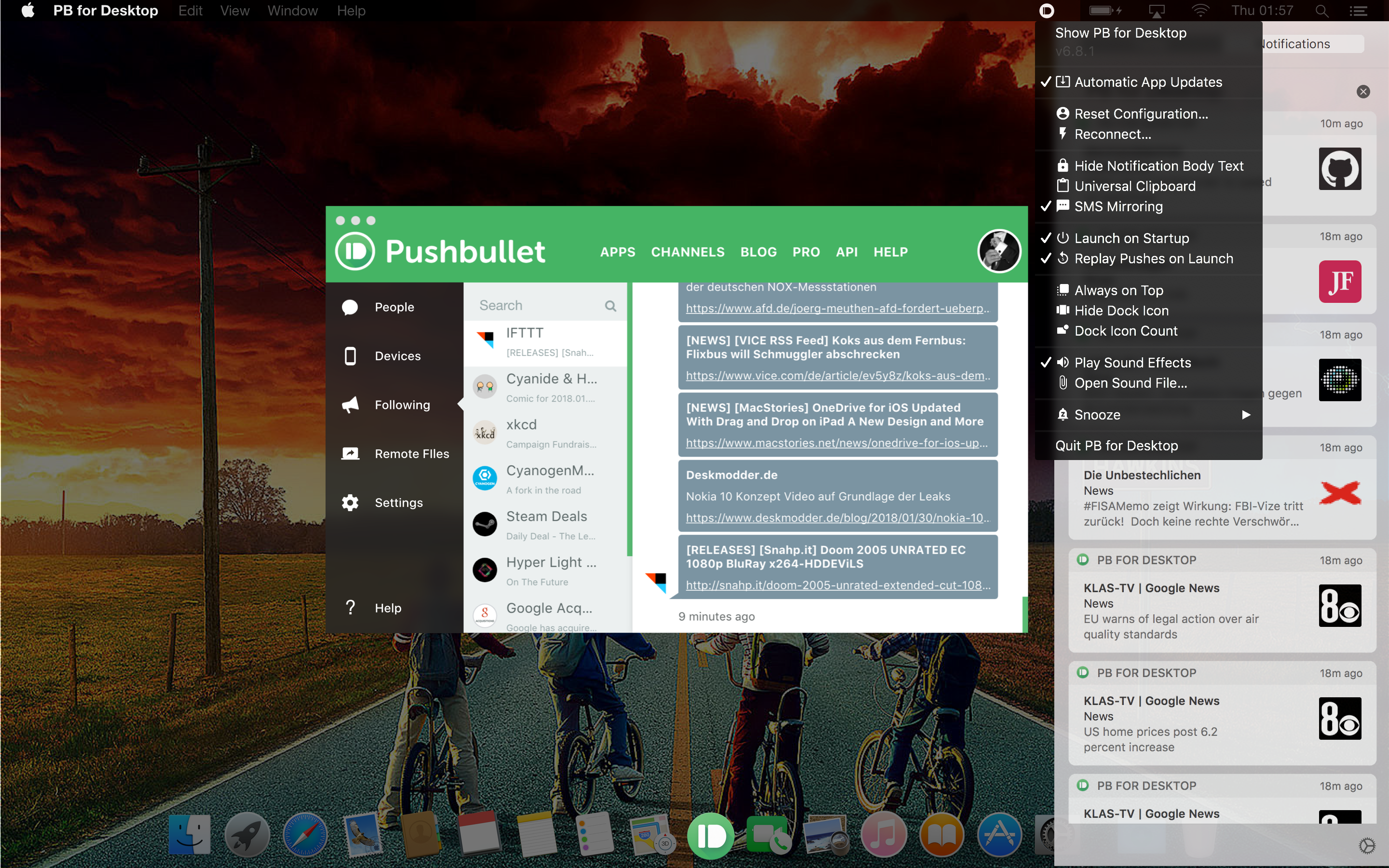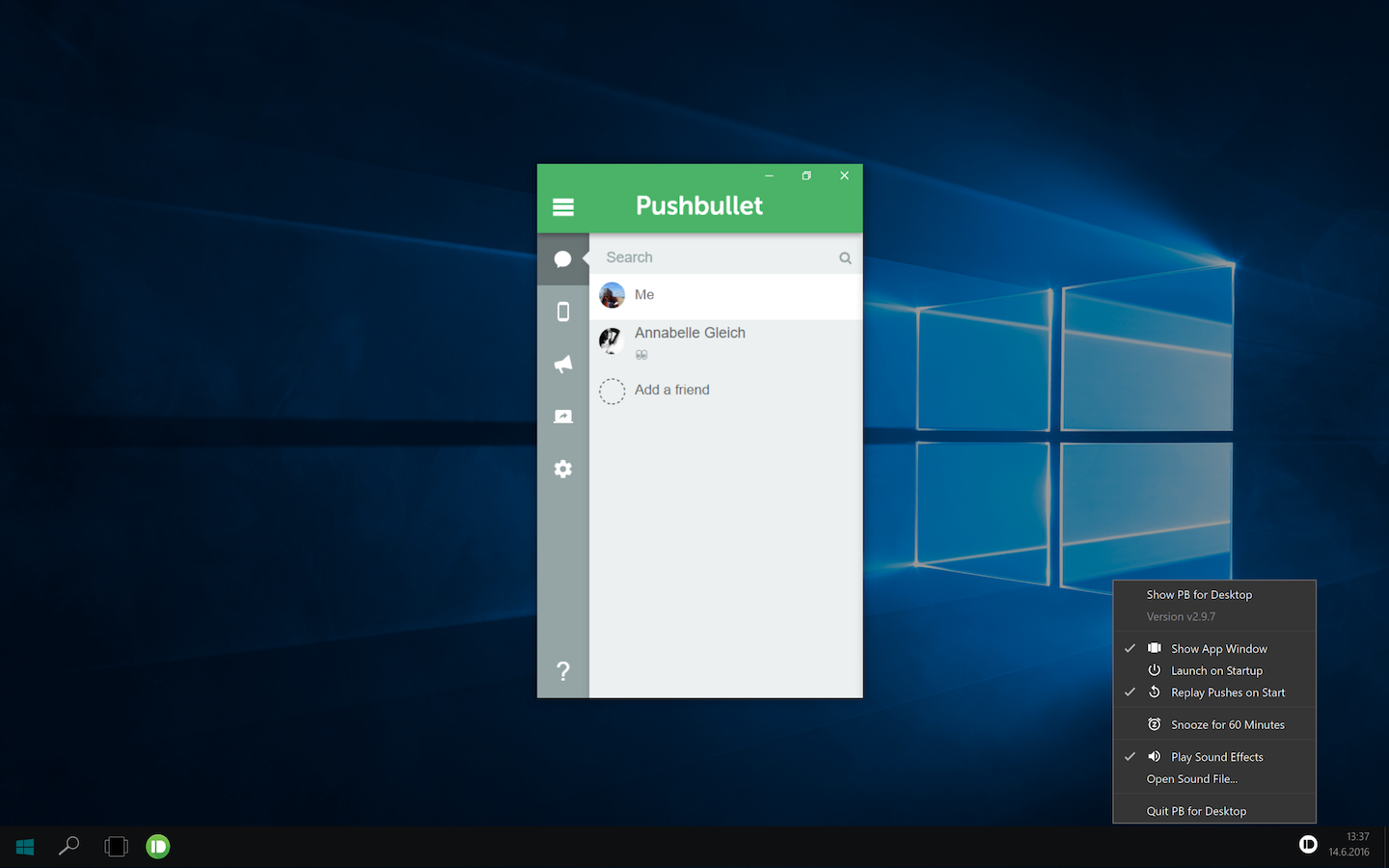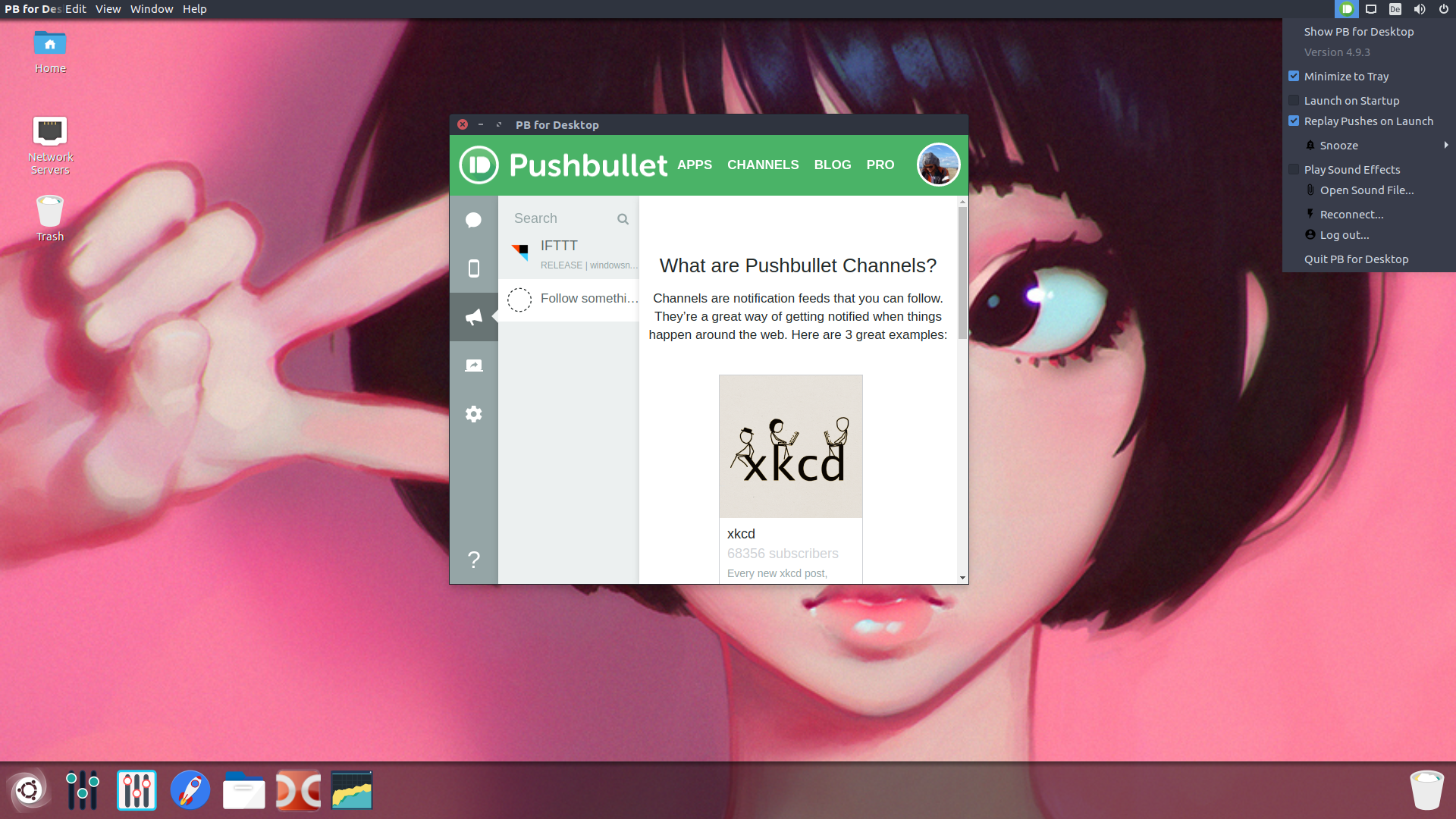PB for Desktop is a lightweight open-source Desktop app for PushBullet.
Receive native push notifications on macOS, Windows and Linux.
![]()
Not affiliated with PushBullet Incorporated.
Native Notifications
Uses the macOS Notification Center, the Windows 10 Action Center and libnotify for Linux.
Cross-Platform
Tested on:
- macOS: 10.11, 10.12, 10.13
- Windows 10: 1607, 1703, 1709
- Linux: Ubuntu 16.04/17.04, elementaryOS 0.4, Linuxmint 18
Unobtrusive
Small resource footprint - runs as a macOS Menu Bar app or a Windows System Tray app.
Simple Setup
No wrestling with API-Keys or other technical knowledge required. Login to Pushbullet using Google or Facebook.
Channel Images
Channel-specific (e.g. IFTTT, Zapier, Chat) icon images for most notifications.
Push Previews
Preview thumbnails for pushes containing images.
Custom Notification Sound Effect
Use the default Pushbullet notification sound effect or one of your choice.
Supports .m4a, .mp3, .mp4, .ogg and .wav.
Dedicated Push Target
Use the PB for Desktop PushBullet device to only send pushes to your desktop.
Inline Notification SMS Message Reply
Reply to SMS messages directly within native Desktop notifications (macOS).
Mirroring
Mirror Android notifications (Android).
Send & receive SMS to Android devices.
Use tags to add emoji to notifications, e.g.: add {video} to show a 📺 with every notification.
Grab the latest version here: Download Pushbullet for Desktop
npm install --global pb-for-desktopDebian-based (via apt)
curl -s https://packagecloud.io/install/repositories/sidneys/pb-for-desktop/script.deb.sh | sudo bash # Adds package repository
sudo apt-get install pb-for-desktop # Installs itRedhat-based (via yum)
curl -s https://packagecloud.io/install/repositories/sidneys/pb-for-desktop/script.rpm.sh | sudo bash # Adds package repository
sudo yum install pb-for-desktop # Installs itClone the repo and install dependencies.
git clone https://github.com/sidneys/pb-for-desktop.git pb-for-desktop
cd pb-for-desktop
npm installRuns the app in development mode.
Usage:
npm run startParameters:
--debugStart with development tools--livereloadStart with live reload
Install the app in the System app folder and start it.
Usage:
npm run localsetupParameters:
--buildRebuild project before installation--debugStart with development tools
Builds the application and creates platform-specific installation packages (see requirements). If no parameter is supplied, the current platform is built.
Usage:
npm run buildParameters:
--macosBuild & Package for macOS--windowsBuild & Package for Windows--linuxBuild & Package for Linux--metadataGenerate Auto-Updater metadata
- Building for Windows requires
wineandmono(on macOS, Linux) - Building for Linux requires
fakerootanddpkg(on macOS, Windows) - Only macOS can build for other platforms.
Install Homebrew, then run:
brew install wine mono fakeroot dpkgsudo apt-get install wine mono fakeroot dpkgTurnkey build-in-the-cloud integration.
The CI deployment is managed by a custom layer of node scripts and Electron-optimized configuration templates. Completed Installation packages are deployed to GitHub Releases. Builds for all platforms and architectures take about 5 minutes. Backed by the open-source-friendly guys at Travis and AppVeyor](https://ci.appveyor.com/) and running electron-packager under the hood.
- Fork the repo
- Generate your GitHub Personal Access Token using "repo" as scope. Copy it to the clipboard.
- macOS + Linux
- Sign in to Travis using GitHub.
- Open your Travis Profile, click "Sync Account" and wait for the process to complete.
- Find this repository in the list, enable it and click "⚙" to open its settings.
- Create a new Environment Variable named GITHUB_TOKEN. Paste your Token from step 2 as value.
- Windows
- Sign in to AppVeyor using GitHub.
- Click on "New Project", select "GitHub", look up this repo in the list and click "Add".
- After import navigate to the Settings > Environment subsection
- Select "Add Variable", insert GITHUB_TOKEN for name, paste your Token as value. Save.
-
Add a new Tag to start the build process:
git tag -a v1.0.1 git push --tags
The builds are started in parallel and added to the "Releases" page of the GitHub repo (in draft mode).
-
Use the editing feature to publish the new app version.
-
There is no step 3
- Signed binaries
- End-To-End Tests (see Spectron)
Read the contribution documentation first.
MIT
sidneys 2017






